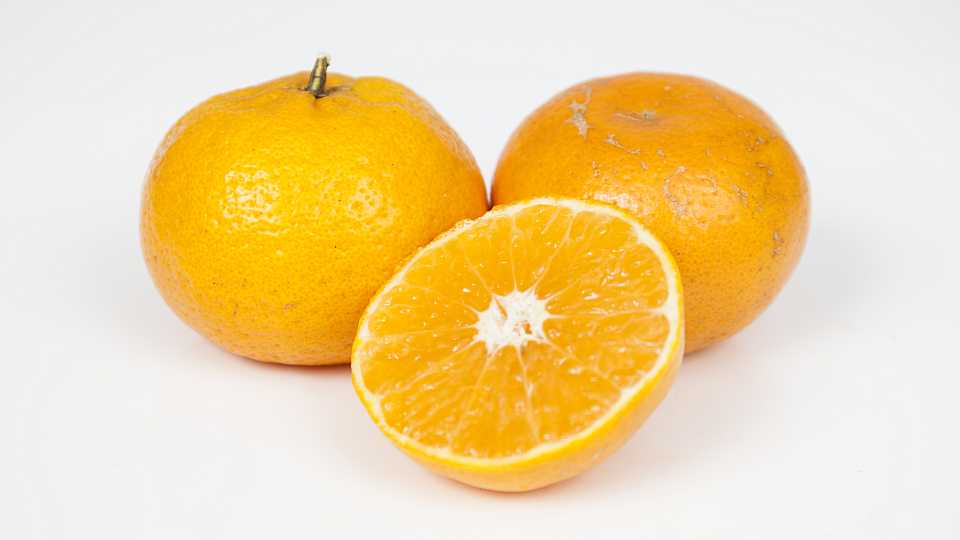
Fruit of the ‘Marathon’ Mandarin will be ready for the October 2020 Variety Display in Lake Alfred.
Photo courtesy of UF/IFAS
Florida’s citrus breeding programs may be clear and present evidence that motivation comes from working on things you care about. Breeding is a continuum and requires one eye on the present and one eye on the future. Breeding projects don’t always go as planned, but with constancy of focus, and an unbridled determination to deliver, good things happen.
With the 2020-2021 citrus season upon us, we reached out to the breeding teams to spotlight the road ahead. Here is a summary.
Dr. Ed Stover, USDA-ARS/USHRL, Ft. Pierce
The USDA scion breeding program has produced more than 28,000 unique hybrids over the last 10 years with 60 different parental combinations. As we have learned more, we make better crosses every year. The first of these new hybrids have been setting fruit for several years, permitting selections based on fruit quality. And many show evidence of HLB tolerance. Selections include many that closely resemble sweet orange and a few that are very grapefruit like.
Some earlier USDA and UF/IFAS selections have been documented to have superior HLB tolerance and strong commercial potential. This has compelled unprecedented collaborative efforts among citrus processors and the USDA, UF/IFAS, and UC-Riverside citrus-breeding programs. The Coca-Cola Company has funded establishment of a 15-acre top-work trial with 200 diverse genotypes replicated on trees already HLB-infected but maintained to a high standard of health by our grower-cooperator. As the top-worked trees establish their new canopies, extensive data will be taken on fruit quality, yield, and HLB-tolerance.
These data, combined with DNA sequencing (also funded by the industry), will permit use of the most modern breeding technique — genomic selection — to accelerate identification and release of new HLB-tolerant cultivars of critical importance to the citrus industry. Genomic selection will even drive choice of parental combinations for future breeding cycles. This is vital but expensive work, and the industry/research consortium, through the CRAFT (Citrus Research and Field Trial) umbrella, has just submitted a new NIFA (National Institute of Food and Agriculture) grant proposal to fund this effort for the next five years. This represents a paradigm shift in citrus breeding, joining other crops in leveraging genomic-science advances to directly benefit our industry, and ushering in an era of unprecedented new citrus scions, including greatly improved sweet-orange and grapefruit-like hybrids.
Dr. Jude Grosser, University of Florida CREC Plant Improvement Team, Lake Alfred
I have an ‘OLL-8’ on UFR-2 sweet orange tree at the Citrus Research and Education Center (CREC) that held its fruit extremely well and had good color and firmness. The fruit had very little granulation and tasted great! The brix level was over 14 for the two fruit that were tested. A local grower thinks we may have a good candidate here for late packing of Florida sweet oranges.
Also of interest is the data from the somaclone-derived seedling populations of ‘Vernia’ and OLL varieties being grown with no psyllid control. We found several ‘Vernia’ clones that were mature with 15 or above ratios in December, a couple of early OLL clones (+/- mid-January maturity), and a couple of OLL clones that made 7.8 pounds solids — outrageous for juvenile trees. Many of the OLL clones are negative for CLas (ct values of 32 or above), which is interesting since the trees are in a high-HLB pressure area and grown with no psyllid control.
Work on grapefruit is also showing promise. A couple of cybrid grapefruit are still looking good, especially the cybrid ‘Flame’. I have found one new triploid grapefruit-like hybrid with pink flesh that is showing exceptional HLB tolerance with great tree canopy thickness, so far. I hope to have some fruit for the displays this season.
Dr. Fred Gmitter, University of Florida CREC Plant Improvement Team, Lake Alfred
On the grapefruit front: We showed a few grapefruit hybrids last season from trees that are holding up well against HLB after six years in the field. Their fruit is grapefruit-like in size, appearance, flavor, and with uniform red flesh color. These results support that we can exploit triploid grapefruit hybrids to achieve substantially enhanced HLB tolerance and to approximate, and even improve upon, grapefruit fruit characteristics.
Mandarins: As ‘Bingo’ trees in the groves are entering their third and fourth seasons, performance seems to be improving. Cropping has been reported to be better this season — most trees with fruit, and fewer trees with the severe over-cropping seen in some locations last season. Fruit sizes are looking better at this point in the season.
The oldest ‘Marathon’ trees are at the CREC. They are now 3½ years old, are healthy, have grown large, and are holding up well so far against HLB. Fruiting was extremely light last season, so we girdled several trees last autumn to push for flowering in spring 2020, and it worked well. However, it may not have been necessary, because the ungirdled trees likewise flowered heavily in the spring and set a nice crop.
LB8-9 ‘Sugar Belle’: This cultivar continues to produce after many years with HLB, and with many new plantings. We have continued to explore incorporating ‘Sugar Belle’ juice into the OJ stream. Brix of 14+, more than 8 pounds solids per box, and color scores at 40 in early December, no off flavors; shows potential.
Previously identified sweet orange-like hybrids continue to hold up well against HLB, and we will explore their potential by planting out new trials and watching their performance in MAC (multi-agency coordination) trials.
Unfortunately, schedule conflicts prevented the inclusion of an update on Dr. José Chaparro’s program. We hope to touch on his work at a later time









